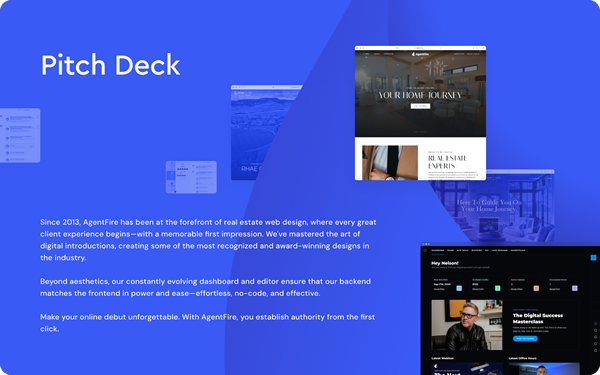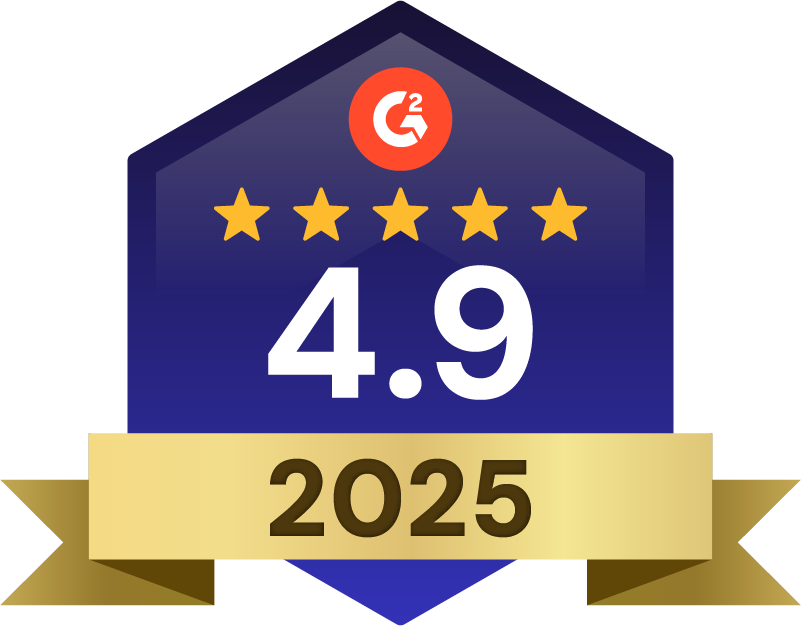12 easy steps for real estate SEO: 1. Define Your Market · 2. Audit Technical SEO · 3. Target High-Intent, Long-Tail Real Estate Keywords
Content Marketing
Imagine this: A potential buyer in your market pulls out their phone and searches for homes in your area. Within seconds, they find a competitor’s website instead of yours.
That’s the power of SEO.
In 2025, real estate is more competitive than ever, and the agents who dominate search rankings will win more leads—without spending a dime on ads. But ranking on Google isn’t about luck; it’s about strategy. According to the NAR, all homebuyers use the internet to search for a home, making it key for agents and brokers to capitalize on high-impact organic visibility.
This guide will walk you through 12 simple yet powerful real estate SEO steps to ensure your website attracts high-intent buyers and sellers, builds trust, and converts organic traffic into clients. Let’s dive in.
What is Real Estate SEO?
Real Estate SEO is the process of optimizing your property listings, agent pages, and overall digital presence so you appear at the top of search engine results pages (SERPs). By catering to search engines (like Google) and user needs, you become a go-to resource online. This is key because:
- Online Searches Dominate: With so many real estate leads starting their buyer or seller journey on Google, a strong ranking is your direct line to qualified traffic.
- High-Intent Traffic: Real estate SEO helps you attract people who are more inclined to convert because they’re actively researching.
- Long-Term ROI: Unlike paid ads, which stop working the moment you pull the budget, organic traffic—once built—keeps flowing.
Why Real Estate SEO Is Different in 2025
Real estate is hyperlocal and frequently changing, with new listings and sold properties daily. You also have unique listing data, location-based competition, and the need for hyperlocal content. As a result, your SEO strategy needs to revolve around local-specific queries, user trust signals such as reviews, and up-to-date resources.
Real Estate SEO: 12 Tips to Rank Organically
This checklist will walk you through every key SEO element needed to succeed in your local real estate market and attract qualified leads through search.
1. Define Your Market
Before optimizing anything, decide where you want to compete most: purely local neighborhoods, wider metro areas, or out-of-state relocations. When you pinpoint specific markets, you’ll also identify the right set of keywords and referral channels to pursue. This clarity drives every subsequent SEO decision you make.
If your practice also attracts foreign buyers or invest-and-hold clientele, broaden part of your plan to capture national (or international) searches. Always differentiate local listings from broader market analyses—this helps your site rank for both community-specific queries and more general keyword phrases.
2. Audit Technical SEO
Regularly take inventory of how your site is doing on Google. Check for broken links, slow loading sections, outdated content, and any indexing errors. Look at top metrics like bounce rate and time on page to see which pages need improvements.
In addition, audit your on-page elements—page titles, meta descriptions, header tags—to ensure they match each page’s intent. If you spot any site speed or mobile responsiveness concerns, prioritize fixing them as soon as possible to avoid losing prospective buyers to competitor websites.

3. Target High-Intent, Long-Tail Real Estate Keywords
Use SEO tools (like Google Keyword Planner, Ubersuggest, or SEMrush) to find search terms that local buyers and sellers actually type in. Focus on neighborhood-level or property-type-specific phrases, such as “2-bedroom condo in [Your City] near schools.” These long-tail keywords often face less competition than simpler keywords like “houses for sale,” and they also attract more serious leads.
Sprinkle these keywords naturally throughout your pages and content. Avoid keyword stuffing—a strategic, organic use is enough to signal relevance while keeping your copy compelling.
4. Optimize Google Business Profile
Claim and fully optimize your Google Business Profile. Add high-quality images, accurate business hours, and an engaging description that incorporates local keywords. Prompt past clients to leave Google reviews; consistent positive feedback not only boosts trust but also influences local SEO algorithms.
Beyond Google, maintain consistent Name, Address, and Phone (NAP) data on Yelp, local directories, and real estate portals. Any mismatch can confuse search engines and lower your site’s local ranking potential.

5. Create Original, Neighborhood-Focused Content
Location is everything in real estate. Publish regular blog posts about new developments, neighborhood highlights, school ratings, and local amenities. Talk through pros and cons of each area so prospective buyers can envision themselves living there.
Consider monthly market reports, Q&A sessions with local business owners, or “best-of” guides (restaurants, parks, events) to drive meaningful local traffic. This is the kind of content that not only ranks well but keeps existing leads returning to your site.

6. Optimize Your On-Page SEO
On-page elements tell search engines exactly what each page covers. Place your target keywords in meta titles, H1/H2 headers, and meta descriptions. Keep URLs clean and descriptive—avoid unnecessary parameters or strings of random numbers.
Within your content, link to relevant internal pages, like your neighborhood guides or real estate listings, to keep visitors engaged. Add a clear call to action (CTA) near the page’s end—something like requesting a consultation, scheduling a tour, or viewing new housing inventory.

7. Leverage Real Estate Schema Markup
Use specific schema markup (RealEstateListing, RealEstateAgent) to help search engines interpret core details about your listings—like price, location, square footage, and property type. Richer search snippets capture attention and can significantly boost click-through rates.
If you feature detailed agent profiles on your site, RealEstateAgent schema can highlight credentials, contact info, and reviews. This helps search engines (and potential clients) quickly identify your authority in the market.
8. Improve Site Speed and Mobile Responsiveness
Slow load times can instantly turn eager buyers away. Compress large images (especially property photos), minify your code, and leverage browser caching. Simple site speed tweaks can pay big dividends in user satisfaction and SEO rankings.
Moreover, ensure your website adapts smoothly to tablets and smartphones. Prominent navigation, easy-to-tap buttons, and properly scaled images keep leads on your site longer—and Google’s mobile-first indexing rewards sites designed with mobile users in mind.
9. Build Local Backlinks and Community Partnerships
Authority signals are a must-have. Connect with local news outlets, relevant blogs, or community organizations to earn backlinks pointing to your site. For instance, sponsor a community event or write a neighborhood market trends piece for a local digital magazine.
Each reputable backlink adds credibility, showing Google you’re a trusted voice in your region. Even a few well-placed local links can outperform dozens of irrelevant or low-quality links.
10. Enhance Accessibility and ADA Compliance
Accessible design benefits everyone. Use image alt tags that describe property photos, provide keyboard navigation options, and display clear headings for screen-readers. Not only does this expand your audience, but it also signals to search engines that your user experience meets modern accessibility standards.
Adding alt text also helps your image SEO, making your property images more likely to appear in search results. This is especially valuable for prospective buyers who rely on visuals in their decision-making process.

11. Use Analytics to Convert More Site Traffic into Leads
Stay data-driven. Use Google Analytics or other platforms to monitor leads, form completions, and call inquiries. Pinpoint which pages or content pieces convert best—whether that’s a neighborhood tour post or a beginner’s guide to buying a vacation home. Then create more of that content to multiply conversions.
Regularly check keyword rankings and organic traffic trends. If your position slips for high-impact terms, reevaluate your page’s content, meta tags, or backlink profile to nudge your ranking back upward.

12. Calculate and Communicate SEO ROI
Showcasing the return on investment (ROI) from your SEO can justify ongoing improvements. For instance, track how many site visitors become leads and how many ultimately result in closings. Estimate the average commission per transaction to tie real revenue back to your organic traffic efforts.
When you quantify these results, you can better focus on channels that deliver the highest ROI. It also helps build confidence among team members or brokerages that SEO is a long-term growth engine worth continuous investment.
Real Estate SEO FAQs
What is the difference between real estate SEO and SEO for other industries?
Real estate SEO is hyperlocal, heavily reliant on up-to-date listings, and focuses on both buyer and seller keywords. It also often involves structured data for property listings and neighborhood guides.
How long does it take to see results from real estate SEO?
You may see improvements in a few weeks (faster indexing, small traffic bumps), but substantial ranking gains typically appear within 3 to 6 months—or longer in fiercely competitive markets.
Is blogging really necessary for real estate SEO?
Absolutely. Quality, keyword-rich blog posts signal to Google that your site stays updated, helpful, and relevant to a broader set of (often long-tail) queries.
Closing Thoughts
Mastering real estate SEO isn’t just about increasing website traffic—it’s about positioning yourself as the go-to authority in your market. The agents and teams who consistently rank at the top of search results aren’t just lucky; they’ve implemented a strategic, data-driven approach that keeps them ahead of the competition. By focusing on hyperlocal content, technical optimizations, and long-term SEO tactics, you’re not just improving rankings—you’re building a sustainable pipeline of high-intent leads.
The real question is: will your website be the one buyers and sellers find first? If you’re ready to take your real estate SEO to the next level, book a demo with AgentFire today and see how we can help you dominate your local market.






